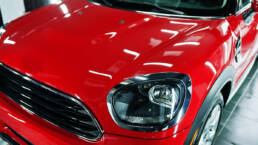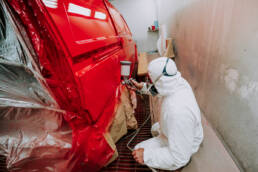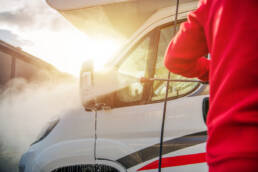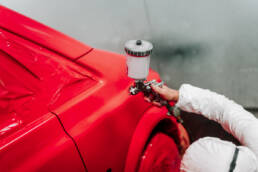As car owners, we often take great pride in our vehicles. Whether it’s a sleek sedan, a rugged SUV, or a powerful truck, our cars are more than just modes of transportation; they become extensions of ourselves, reflecting our style, personality, and way of life. Naturally, we want to keep them in pristine condition for as long as possible. However, despite our best efforts, accidents and wear-and-tear are inevitable, and our cherished vehicles can fall victim to various forms of auto body damage.
From minor scratches and dents to more severe collisions and weather-related damage in Denver, auto body damage can be a costly and frustrating ordeal. Not only can it mar the appearance of our prized possessions, but it can also impact safety and diminish their resale value. That’s why understanding the common causes of auto body damage and learning how to avoid them becomes paramount for every responsible car owner.
Whether you’re a seasoned driver or a new car owner, buckle up as we take a journey through the world of auto body damage and discover the keys to keeping your beloved ride in impeccable condition. Let’s embark on this road to car care together and make sure your wheels stay as stunning as the day they first hit the asphalt.
Cause 1: Collisions and Accidents
It’s an unfortunate truth that collisions and accidents are among the leading causes of auto body damage. Even with advanced safety features in modern vehicles, accidents can happen due to a momentary lapse in attention, adverse road conditions, or other drivers’ mistakes. Here are some scenarios that commonly lead to collisions and accidents:
- Distracted Driving
In today’s digital age, smartphones and other electronic devices have become significant distractions on the road. Texting, talking on the phone, adjusting GPS, or even tuning the radio can divert our attention from the task at hand – driving. - Tailgating
Following the vehicle in front too closely can be a recipe for disaster. Not maintaining a safe distance reduces the time available to react to sudden stops or obstacles on the road, increasing the likelihood of rear-end collisions. - Reckless Driving
Speeding, aggressive lane changes, and disregarding traffic signals can significantly increase the chances of accidents.
Tips to avoid collisions
- Stay Focused: When behind the wheel, prioritize driving and minimize distractions. If necessary, pull over to use your phone or handle any other tasks.
- Maintain a Safe Following Distance: The general rule is to keep at least a three-second gap between your car and the vehicle in front of you. Increase this distance in adverse weather conditions.
- Obey Traffic Laws: Stick to the speed limit, use turn signals, and stop at red lights and stop signs. Being a responsible driver reduces the likelihood of accidents.
Cause 2: Hail and Weather-Related Damage
Mother Nature can be both awe-inspiring and destructive, and hail is one of the natural phenomena that can wreak havoc on your vehicle’s exterior. While hailstones may seem harmless, they can dent the body and crack windshields with surprising force. Other weather-related hazards, such as falling branches during storms or debris kicked up by strong winds, can also cause damage.
- Hail Damage
Hailstorms can occur unexpectedly, leaving your car vulnerable to unsightly dents and dings. - Storm Debris
Strong winds can turn seemingly harmless objects into projectiles, causing scratches and more significant damage.
Precautions to protect your vehicle during severe weather
- Park in Covered Areas
Whenever possible, park your car in a garage or covered parking lot to shield it from hail and falling debris. - Use Car Covers
If you don’t have access to covered parking, invest in a car cover designed to withstand harsh weather conditions. - Stay Informed
Keep an eye on weather forecasts, so you can take preventive measures when storms are expected.
Cause 3: Scratches, Dents, and Parking Lot Mishaps
While accidents on the road are a significant cause of auto body damage, sometimes the harm occurs right where you least expect it – in parking lots. Scratches and dents can appear mysteriously, and though they may seem minor, they can still mar the appearance of your vehicle.
- Door Dings and Scratches
Careless drivers opening their doors too wide can accidentally ding your car, leaving unsightly marks. Additionally, parking too close to shopping carts or other vehicles can result in scratches and scrapes. - Minor Collisions
Low-speed fender-benders and backing into stationary objects, such as poles or walls, are not uncommon in parking lots.
Tips for safe parking and avoiding scratches/dents
- Choose Your Parking Spots Wisely: Opt for spots with ample space around them, reducing the chances of others parking too close to your car.
- Park Away from High-Traffic Areas: If possible, park farther away from entrances and exits, where foot traffic and carts are more likely to be present.
- Be Cautious When Opening Doors: Take care when opening your car doors to avoid hitting neighboring vehicles.
- Use Parking Sensors and Cameras: If your car is equipped with parking sensors or a rear-view camera, use them to aid you in parking safely.
Cause 4: Rust and Corrosion
Rust is the car owner’s arch-nemesis, silently corroding the metal parts of your vehicle and spreading like a disease if left unchecked. While rust and corrosion can occur due to various factors, environmental elements play a significant role.
- Moisture and Salt Exposure
Vehicles driven in regions with high humidity, coastal areas, or snowy climates are more susceptible to rust formation due to increased exposure to moisture and road salts. - Stone Chips and Scratches
When your car’s paint is chipped or scratched, it creates an entry point for moisture and corrosion to take hold.
Preventive measures to keep rust at bay
- Regular Washing and Waxing: Regularly wash your car, especially after driving in areas with salted roads, to remove dirt and grime that can contribute to rust.
- Apply Rust Protection: Consider rust-proofing treatments to protect your vehicle’s undercarriage and vulnerable areas.
- Address Paint Damage Promptly: Repair any paint chips, scratches, or dents as soon as possible to prevent rust from forming.
Cause 5: Improper Road Maintenance
While we might not have control over road conditions, understanding the hazards and how they can damage the auto body can help us take precautions while driving.
- Potholes
Hitting a pothole at speed can cause significant damage to your vehicle’s suspension, tires, and body. - Debris on the Road
Loose gravel, road debris, or even fallen branches can lead to scratches and dents.
Driving techniques to minimize damage
- Stay Alert: Pay attention to road conditions and any warning signs about construction or debris.
- Reduce Speed on Rough Roads: Slow down when encountering potholes or poorly maintained roads to lessen the impact.
By being proactive and taking necessary precautions, you can protect your vehicle from common causes of auto body damage, preserving its beauty and value. Stay tuned for the conclusion of this blog, where we’ll share additional tips for auto body care and maintenance to keep your car looking its best.
Bonus Tips for Auto Body Care
Caring for your vehicle’s auto body goes beyond avoiding common causes of damage. Regular maintenance and proper cleaning can significantly extend the lifespan and aesthetics of your car. Here are some bonus tips for keeping your vehicle in top shape:
Regular Inspections and Maintenance
Schedule periodic inspections with a trusted mechanic to identify any potential issues early on. Regular maintenance, including oil changes, tire rotations, and brake checks, can prevent larger problems down the road.
Proper Cleaning Techniques and Products
When washing your car, use gentle cleaning products and a soft microfiber cloth to avoid scratching the paint. Additionally, consider using a wax or sealant to protect the paint from UV rays and environmental contaminants.
Understanding Insurance Coverage for Auto Body Repairs
Review your insurance policy to understand the extent of coverage for auto body repairs. Knowing what your insurance will cover in case of damage can save you from unexpected expenses.
Your car is more than just a means of transportation – it’s a valuable asset and an expression of your personality. Protecting your vehicle’s auto body from common causes of damage is essential to ensure it remains safe, attractive, and retains its value.
In this blog, we explored the top five common causes of auto body damage and learned how to avoid them. We discussed the importance of staying focused while driving, taking preventive measures during severe weather, parking safely to avoid scratches and dents, addressing rust and corrosion promptly, and being cautious on poorly maintained roads.
Remember, car care is an ongoing process that requires attention and dedication. By following the tips and preventive measures outlined in this blog, you can minimize the risk of auto body damage and keep your beloved ride looking its best.
So, whether you’re a seasoned car owner or a new driver, make auto body care a priority, and your vehicle will reward you with many years of reliable and stylish service. Take pride in your wheels and enjoy the road with confidence, knowing you’ve taken the necessary steps to protect and preserve your automotive investment. And if you do find yourself in need of auto body repair, set up an appointment today. Safe driving and happy motoring!
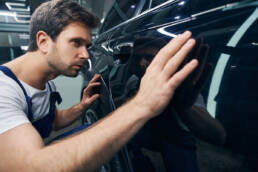
We will repair your vehicle with competence and consideration! Let us get the job done right for you the first time and take the stress out of auto body repairs!
Like this article? Spread the word!
Related Posts
April 23, 2024
Savings and Benefits: How Paintless Dent Removal Can Preserve Your Car’s Value
Preserve your car's value with paintless dent removal. Premium Automotive in Aurora,…
March 15, 2024
Protecting Your Vehicle’s Paint Job: Top Tips to Prevent Chips, Scratches, and Fading
Protect your vehicle's paint job from chips, scratches, and fading with expert tips from…
February 15, 2024
When Paintless Dent Removal Works Best: Assessing Dent Types and Suitability
Discover the benefits of Paintless Dent Removal (PDR) at Premium Automotive in Aurora.…


